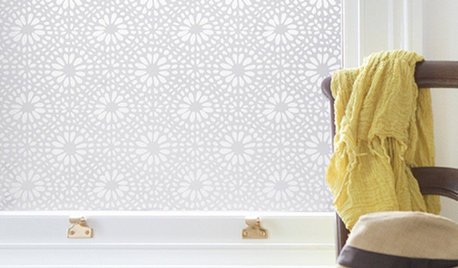Remove window film immediately?
keys
17 years ago
Featured Answer
Comments (43)
oberon476
17 years agomike35
17 years agoRelated Professionals
Glen Burnie Window Contractors · Granite City Window Contractors · Wixom Window Contractors · Cutler Ridge Window Contractors · Holly Hill Window Contractors · Sunrise Window Contractors · Washington Window Contractors · Mount Sinai Interior Designers & Decorators · Sweetwater Interior Designers & Decorators · Boardman General Contractors · East Riverdale General Contractors · North Tustin General Contractors · Springboro General Contractors · Hayward Carpenters · Evergreen Park CarpentersRWmaine
12 years agoArturW
11 years agoTrapper1
11 years agooberon476
11 years agooberon476
11 years agoWindows on Washington Ltd
11 years agoJumpilotmdm
11 years agodliepmanSUX
10 years agolast modified: 9 years agoWindows on Washington Ltd
10 years agoHomeSealed
10 years agoVanessafox
9 years agotexasgal47
9 years agomillworkman
9 years agoWindows on Washington
9 years agoHandyWorx LLC
9 years agoEddie King
9 years agobibce
8 years agomillworkman
8 years agohoovb zone 9 sunset 23
8 years agomillworkman
8 years agobibce
8 years agoWindows on Washington Ltd
8 years agobioven
7 years agoYvette White
7 years agoMary Barrett
7 years agoGargamel
7 years agoWindows on Washington Ltd
7 years agoGargamel
7 years agoWindows on Washington Ltd
7 years agoRon Franks Cabinetry
7 years agoleskyp
6 years agoekellyva
6 years agoSandra Hayes
6 years agolast modified: 6 years agotonimstewart
5 years agoHU-756840129
5 years agotonimstewart
5 years agotonimstewart
5 years agoHU-756840129
5 years agoHU-756840129
5 years agoSandy Hayes
5 years ago
Related Stories

DECORATING GUIDESSolve Privacy Problems With Window Film
Let the light in and keep prying eyes out with an inexpensive and decorative window film you can apply yourself
Full Story
ENTERTAININGSimple Pleasures: Movie Night for Film Buffs
In a world of rising cinema costs ... at a time when gathering comes naturally ... small screens are hitting the big time
Full Story
HOUSEKEEPINGHow to Remove Water Rings From Wood Tables
You may be surprised by some of these ideas for removing cloudy white water marks from wood surfaces
Full Story
WINDOW TREATMENTSA Surefire Way to Prevent Sun Damage Indoors
Why let light ruin your furniture, floors and artwork, when the solution could be as simple as applying high-quality window film?
Full Story
WINDOWSHow to Ditch the Drapes and Let Your Windows Shine
If your home has beautiful windows and you don’t need to hide a view, consider dressing them in these elegant, creative ways
Full Story
MODERN ARCHITECTUREKeep Your Big Windows — and Save Birds Too
Reduce bird strikes on windows with everything from architectural solutions to a new high-tech glass from Germany
Full Story
WINDOW TREATMENTSThe Key to Designer-Look Window Treatments
Learn the one thing that will make your curtains suffer if you get it wrong — and how to get it right
Full Story
HOUSEKEEPINGGet Glass Windows and Doors Gleaming Clean
Preserve a spotless view with these guidelines for keeping soap scum, hard water spots and dirt at bay on glass surfaces around the home
Full Story
BATHROOM DESIGNWindows That Expose Your Bathroom to Light Without Exposing You
Enjoy the best of both worlds with window tricks that give you privacy along with the views and natural light
Full Story
EXTERIORSWindow Wizardry: 7 Clever Approaches to Privacy
Do you want more privacy without losing your view or feeling boxed in? Take a look at these creative building solutions
Full Story










steveselak